- How to Propagate Currants from Cuttings
- 1. Select the Cuttings
- 2. Prepare the Cuttings
- 3. Dip in Rooting Hormone
- 4. Plant the Cuttings
- 5. Provide Proper Care
- 6. Monitor and Maintain
- Preparing the Cuttings
- Selecting a Healthy Plant
- Taking the Cuttings
- Preparing the Soil
- 1. Choose the right location
- 2. Clear the area
- 3. Test the soil
- 4. Amend the soil
- 5. Provide drainage
- 6. Dig the planting holes
- 7. Backfill with soil
- 8. Mulch the area
- Planting the Cuttings
- Providing Proper Care
- 1. Pruning
- 2. Fertilization
- 3. Watering
- 4. Pest and Disease Control
- 5. Support and Training
- 6. Harvesting
- Accelerating Fruit Bearing
- Proper Pruning
- Fertilization
- Thinning the Fruit
- Pollination
- Proper Watering
- Proper Sunlight Exposure
- Harvesting and Using Currants
- 1. Harvesting Currants
- 2. Storing Currants
- 3. Using Currants in Cooking
- 4. Health Benefits of Currants
- Conclusion
- Question-answer:
- Is it possible to propagate currants from cuttings?
- What is the best time to propagate currants?
- How do I take cuttings to propagate currants?
- Can I propagate currants by layering?
- How long does it take for propagated currants to bear fruit?
- Video: Growing Currants: Troubleshooting 4 Common Problems
Propagating currants and accelerating fruit-bearing can be an exciting and rewarding endeavor for any gardener. Whether you are a seasoned gardener or just starting out, there are several quick and effective techniques that can help you propagate currants and enjoy a bountiful harvest in no time.
One of the most popular methods for propagating currants is through hardwood cuttings. This technique involves taking a 6 to 8-inch cutting from a healthy, disease-free currant plant during its dormant season. The cutting should be taken from the previous year’s growth and should have at least two or three buds. After removing the lower leaves, the cutting can be dipped in rooting hormone and planted in a well-draining soil mix. With proper care and attention, these hardwood cuttings can root and develop into healthy currant plants within a few months.
Another effective technique for propagating currants is through layering. This method works well with established currant plants that have long, flexible branches. To propagate through layering, select a low-hanging branch and dig a small trench underneath it. Gently bend the branch down and bury a portion of it in the trench, making sure to leave a few of the upper buds exposed. You can encourage rooting by scraping the bark and applying rooting hormone to the buried portion of the branch. Over time, new roots will develop, and the branch can be separated from the parent plant and transplanted.
In addition to these propagation techniques, there are several other tips and tricks that can help accelerate fruit bearing in currant plants. Pruning is essential for maintaining the health and productivity of currant plants. Regular pruning helps remove dead or diseased wood, encourages the growth of new branches, and improves air circulation. It is important to prune currant plants during their dormant season to avoid any unnecessary stress.
Providing the right amount of sunlight, water, and nutrients is also crucial for accelerating fruit bearing in currant plants. Currants thrive in full sun but can tolerate partial shade. They prefer well-draining soil and should be watered deeply but infrequently to prevent root rot. Regular fertilization with a balanced fertilizer can help promote healthy growth and abundant fruit production.
By utilizing these quick and effective techniques for propagating currants and accelerating fruit bearing, you can enjoy a fruitful harvest of this delicious and nutritious fruit in no time. Whether you choose to propagate through hardwood cuttings or layering, or employ proper pruning and care techniques, your efforts will be rewarded with a bountiful crop of currants.
How to Propagate Currants from Cuttings
Propagating currants from cuttings is a relatively simple and effective method to create new plants. Here are the steps to successfully propagate currants from cuttings:
1. Select the Cuttings
Choose healthy and disease-free branches for your cuttings. Select young, flexible shoots that are around 6 to 8 inches in length. Avoid using old or woody branches as they are less likely to root successfully.
2. Prepare the Cuttings
Remove all the leaves from the lower two-thirds of the cutting. Trim the cutting just below a bud at the base and just above a bud at the top. This will provide a clean and ready-to-root cutting.
3. Dip in Rooting Hormone
To increase the chances of successful rooting, dip the bottom end of each cutting into a powdered rooting hormone. This hormone will stimulate root growth and encourage faster establishment of the cutting.
4. Plant the Cuttings
Prepare a pot or a bed with well-draining soil. Dig a hole or create a small trench to accommodate the cutting. Gently place the cutting in the hole, making sure that at least two buds are below the soil surface. Firmly press the soil around the cutting to ensure good contact.
5. Provide Proper Care
Water the newly planted cuttings thoroughly, ensuring that the soil is moist but not waterlogged. Place a clear plastic bag or a plastic dome over the cuttings to create a humid environment. Keep the cuttings in a shaded area to avoid direct sunlight.
6. Monitor and Maintain
Check the cuttings regularly and keep the soil consistently moist. Remove any dead or rotting cuttings promptly to prevent the spread of disease. After a couple of months, gently tug on the cuttings to check for roots. Once the cuttings have established a healthy root system, they can be transplanted to their permanent location.
By following these steps, you can propagate currants from cuttings and enjoy a bountiful harvest in a shorter time. It’s an easy and cost-effective way to expand your currant garden.
Preparing the Cuttings
Before propagating currants, it is important to prepare the cuttings properly. This will ensure the success of the process and accelerate fruit bearing. Here are the steps to follow:
- Selecting the Right Cuttings: Choose one-year-old shoots that are healthy and free from diseases or pests. Ideally, the diameter of the cutting should be about a pencil thickness.
- Timing: The best time to take cuttings is in late winter or early spring while the plant is still in dormancy. This is when the currant plants are most likely to root successfully.
- Preparing the Cutting: Using a clean and sharp pair of scissors or pruners, cut the shoots into 6-8 inch lengths. Make the cut just below a node, which is where the leaves or buds emerge.
- Removing Leaves: Strip off any leaves from the bottom 3-4 inches of the cutting. This will help prevent moisture loss and encourage root growth.
- Optional Hormone Treatment: Some gardeners like to dip the bottom end of the cutting in a rooting hormone powder before planting. This can help stimulate root development, but it is not necessary for successful propagation.
- Labeling: It is a good practice to label each cutting with the variety name or any other relevant information. This will help keep track of different varieties and ensure accurate labeling once the plants are established.
By following these steps and preparing the cuttings properly, you will increase the chances of successful propagation and speed up the fruit-bearing process for your currant plants.
Selecting a Healthy Plant
When propagating currants, it is important to start with a healthy plant to ensure successful growth and fruit bearing. Here are some factors to consider when selecting a plant for propagation:
Plant Size: Choose a plant that is at least two years old and has a sturdy stem. Avoid plants that are too small or weak, as they may not have established strong roots yet.
Foliage: Examine the leaves of the plant. They should be vibrant green and free from yellowing, spots, or signs of pest infestation. Healthy foliage indicates a plant that is capable of photosynthesis and nutrient absorption.
Root System: Carefully inspect the root system of the plant. The roots should be well-developed, firm, and free from rot or damage. Avoid plants with sparse or tangled roots, as they may have difficulty establishing in their new environment.
Branch Structure: Assess the overall branch structure of the plant. Look for a well-balanced plant with multiple strong branches. Avoid plants with crossed or damaged branches, as they may affect the plant’s growth and fruit production.
No Pests or Diseases: Check for any signs of pests or diseases on the plant. Look for visible insects, webs, or discoloration that may indicate the presence of pests. Avoid plants with signs of diseases such as wilting, lesions, or abnormal growth.
By carefully selecting a healthy plant, you can give your propagated currants the best chance of thriving and producing abundant fruit.
Taking the Cuttings
In order to propagate currants, you will need to take cuttings from an existing plant. The best time to do this is during the dormant season, typically in late winter or early spring.
To take cuttings, follow these steps:
- Select a healthy, disease-free plant that is at least two years old.
- Using sharp, clean pruning shears, cut a 6 to 8 inch long stem from the plant. Make sure to choose a stem that is flexible and does not have any flower buds.
- Remove any leaves from the lower two-thirds of the cutting.
- Optional: Dip the cut end of the stem in rooting hormone to promote root development.
- Place the cutting in a pot filled with a well-draining propagation mix. Make sure to place it deep enough so that at least one node is below the soil line.
- Water the cutting well and cover it with a plastic bag or a mini greenhouse to create a humid environment.
- Keep the cutting in a warm location with indirect light. Avoid direct sunlight, as it can overheat the cutting.
- Check the cutting regularly and mist it with water if it starts to dry out.
- After a few weeks, gently tug the cutting to check for root development. If it resists, it means roots have formed.
Once the cutting has developed roots, it can be transplanted into a larger pot or into the ground. Keep in mind that it may take a couple of years before the propagated currant plant starts to bear fruit.
Preparing the Soil
Before propagating currants and accelerating fruit bearing, it is essential to prepare the soil properly. Here are some steps to follow:
1. Choose the right location
Find a location for planting the currant bushes that receives full sun or partial shade. Ensure the area has well-drained soil and is protected from strong winds.
2. Clear the area
Remove any weeds, grass, or debris from the planting area. Clearing the area will prevent competition for nutrients and ensure the currant bushes have optimal growing conditions.
3. Test the soil
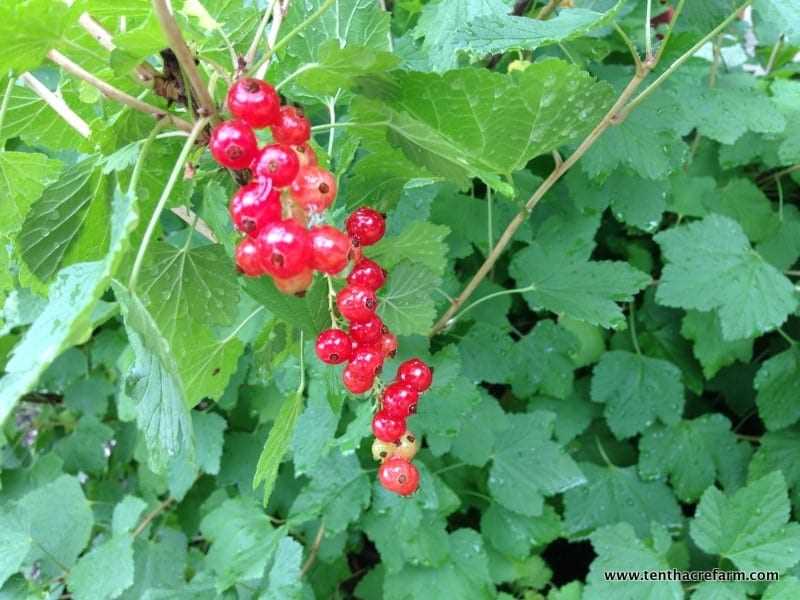
Perform a soil test to determine its pH level and nutrient content. Currants prefer slightly acidic soil with a pH range of 5.5 to 7.0. Based on the test results, adjust the soil pH if necessary by adding lime to raise it or sulfur to lower it.
4. Amend the soil
If the soil is heavy clay or lacks organic matter, it is beneficial to amend it with compost or well-rotted manure. Incorporating organic matter improves soil structure, drainage, and nutrient retention, creating a favorable environment for the currant bushes to thrive.
5. Provide drainage
If the soil in the planting area is heavy and tends to retain water, consider improving drainage by incorporating sand or perlite. Ensuring proper drainage prevents waterlogged conditions, which can lead to root rot and other problems for the currant bushes.
6. Dig the planting holes
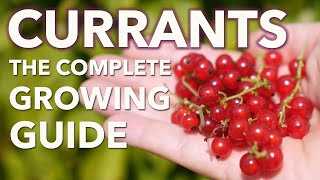
Prepare individual planting holes for each currant bush. The holes should be wide and deep enough to accommodate the roots without bending or crowding them. Space the holes at least 3-4 feet apart to allow for adequate airflow and sunlight penetration.
7. Backfill with soil
After placing the currant bushes in their respective holes, backfill them with the removed soil. Gently firm the soil around the roots to eliminate air pockets and provide stability to the plants.
8. Mulch the area
Apply a layer of organic mulch, such as wood chips or straw, around the base of the currant bushes. Mulching helps conserve moisture, suppresses weeds, and regulates soil temperature.
By following these steps to prepare the soil, you can create an ideal growing environment for propagating currants and accelerating fruit bearing.
Planting the Cuttings
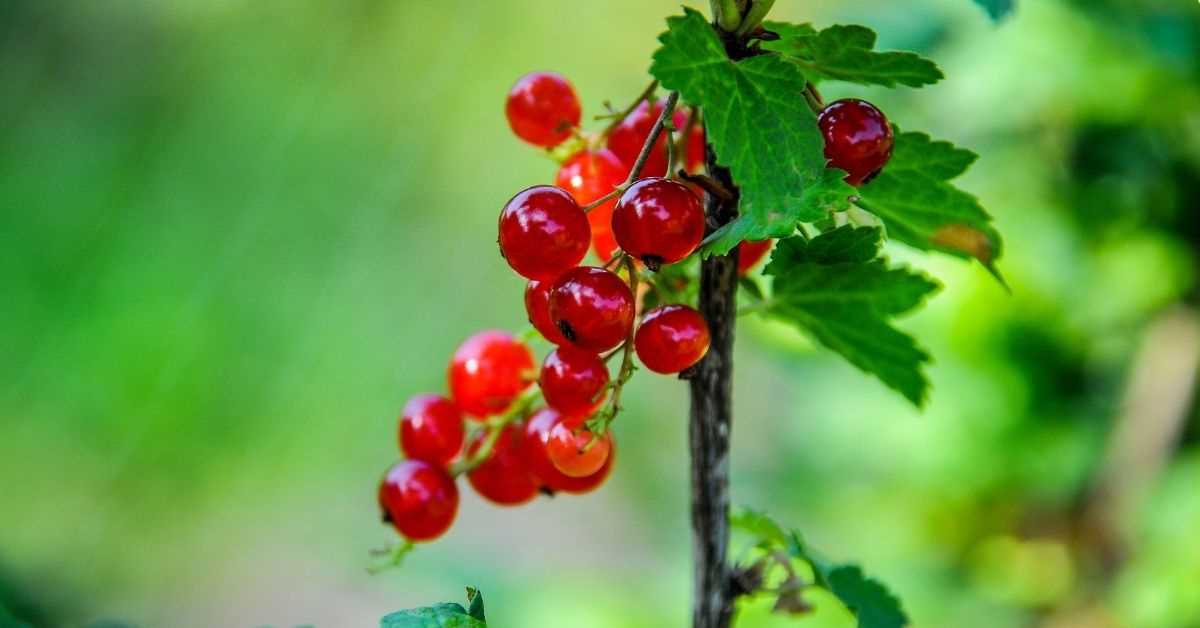
After propagating currants through stem cuttings, it is important to properly plant them to ensure their growth and fruit bearing. Follow these steps to plant the cuttings:
- Prepare the Soil: Choose a well-drained location with fertile soil. Amend the soil with organic matter, such as compost or well-rotted manure, to improve its nutrient content and drainage.
- Timing: Plant the cuttings in late winter or early spring, when the ground is workable and the cuttings are dormant.
- Spacing: Space the cuttings at least 3 feet apart in rows that are 6 feet apart. This will allow adequate room for the plants to grow and spread.
- Preparing the Cuttings: Trim the cuttings to have a length of about 6-8 inches. Remove any leaves from the lower half of the cutting.
- Planting: Dig a hole that is deep enough to accommodate the cutting and its roots. Place the cutting in the hole, making sure the top bud is positioned just above the soil line. Gently firm the soil around the cutting to ensure good contact between the cutting and the soil.
- Watering: After planting, water the cuttings thoroughly to settle the soil around the roots. Maintain moist but not waterlogged soil throughout the growing season.
- Mulching: Apply a layer of organic mulch, such as straw or wood chips, around the base of the cuttings. This will help conserve moisture and suppress weed growth.
- Support: If necessary, provide support for the young plants with stakes or trellises to keep them upright and prevent damage from strong winds or heavy fruit load.
By following these steps, you can effectively plant the cuttings and ensure their successful growth and fruit bearing. Keep in mind that it may take a couple of years for the plants to start producing fruit, but with proper care and maintenance, you will be rewarded with a bountiful harvest of currants.
Providing Proper Care
Proper care is essential for the successful propagation and fruit bearing of currant plants. By following these guidelines, you can ensure the health and productivity of your currant plants:
1. Pruning
Pruning is an important practice for currant plants. It helps to maintain the shape of the plant, promote air circulation, and remove diseased or damaged branches. Prune your currant plants during the dormant season, preferably in late winter or early spring. Remove any dead or weak branches, as well as any branches that are crossing or rubbing against each other. Aim to keep the center of the plant open to allow sunlight to reach the inner branches.
2. Fertilization
Proper fertilization is crucial for the healthy growth and fruit production of currant plants. Apply a balanced fertilizer, such as a 10-10-10 or 12-12-12 formula, in early spring before new growth begins. Follow the recommended application rates on the fertilizer packaging. Additionally, you can apply a layer of compost or well-rotted manure around the base of the plants to provide additional nutrients throughout the growing season.
3. Watering
Currant plants require regular watering, especially during dry periods. Water deeply and evenly, making sure to moisten the root zone. Avoid over-watering, as this can lead to root rot. Mulching around the base of the plants can help to conserve moisture and prevent weed growth.
4. Pest and Disease Control
Keep an eye out for common currant pests such as aphids, currant borers, and spider mites. Regularly inspect your plants and take appropriate measures to control any infestations. This may involve using insecticidal sprays or introducing natural predators like ladybugs. Additionally, be on the lookout for fungal diseases such as powdery mildew and anthracnose. If you notice any signs of disease, promptly remove and destroy affected plant parts.
5. Support and Training
As currant plants grow, they may require support to prevent branches from breaking under the weight of fruit. Install stakes or a trellis system to provide support and keep the plants upright. Additionally, train the branches by tying them to the support structure to promote a more compact and manageable plant.
6. Harvesting
To enjoy your currant harvest, pick the berries when they are fully ripe. This is usually indicated by a deep color and a slight softness to the touch. Gently remove the berries from the plant, being careful not to damage the surrounding branches. Harvesting regularly promotes continued fruit production throughout the season.
| Aspect of Care | Description |
|---|---|
| Pruning | Remove dead or weak branches, as well as any crossing or rubbing branches, during the dormant season. |
| Fertilization | Apply a balanced fertilizer in early spring and supplement with compost or manure. |
| Watering | Water deeply and evenly, avoiding over-watering. |
| Pest and Disease Control | Monitor for pests and diseases, and take appropriate control measures. |
| Support and Training | Provide support and train branches to prevent breakage. |
| Harvesting | Pick ripe berries gently to enjoy a bountiful harvest. |
Accelerating Fruit Bearing
Accelerating fruit bearing is a key aspect of successfully cultivating currants. By implementing certain techniques, you can encourage your currant bushes to produce fruit at a faster pace. Here are some effective methods:
Proper Pruning
Regular pruning is essential to promote fruiting in currant bushes. Remove any dead or weak branches to redirect the plant’s energy towards fruit production. Pruning should be done during the dormant season, which is typically in late winter or early spring.
Fertilization
Applying the right nutrients to the soil can significantly speed up the fruit-bearing process. Use a balanced fertilizer, rich in nitrogen, phosphorus, and potassium, to nourish the plants. Apply the fertilizer according to the recommended dosage and frequency, typically in early spring and again in early summer.
Thinning the Fruit
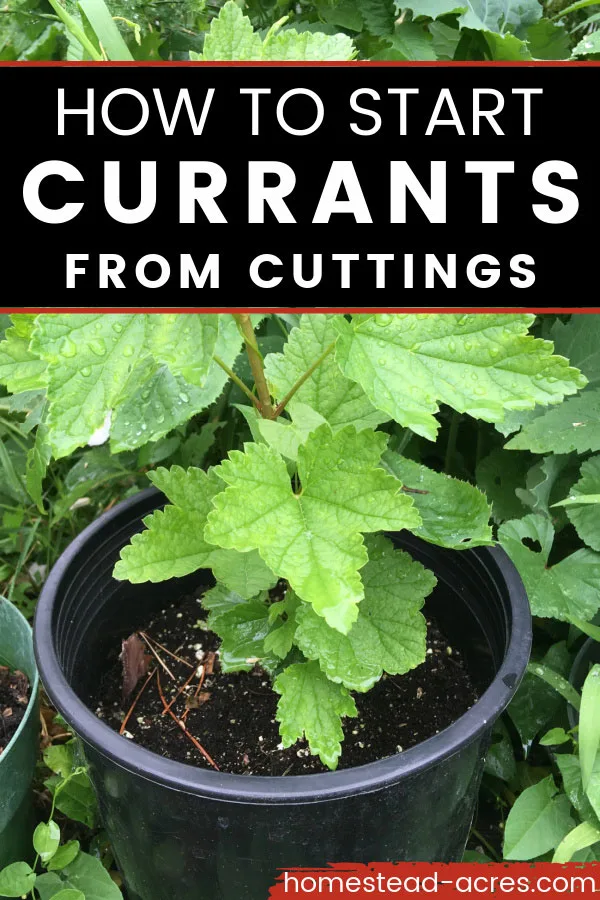
Thinning out excess fruit helps focus the plant’s energy on the remaining fruit, resulting in larger and better-quality berries. When the berries reach about pea size, carefully remove some of them, leaving space between the remaining ones. This method allows the plant to allocate its resources more efficiently.
Pollination
Currant bushes rely on pollination to produce fruit. Ensure that you have a sufficient number of pollinators, such as bees, in your garden. If necessary, you can manually transfer pollen from one flower to another using a small brush or cotton swab.
Proper Watering
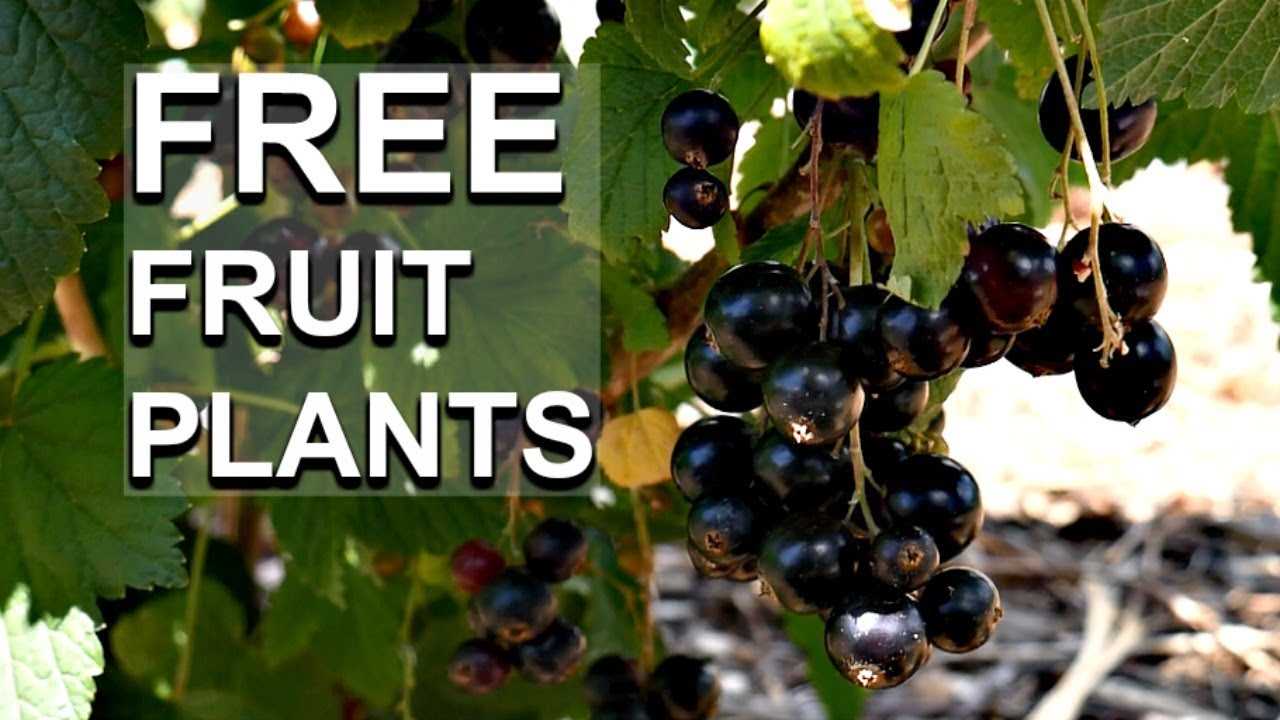
Consistent and adequate watering is crucial for fruit development in currant bushes. Keep the soil evenly moist, especially during dry periods. Avoid overwatering, as it may lead to root rot and other issues. Mulching around the base of the plant can help retain moisture and regulate soil temperature.
Proper Sunlight Exposure
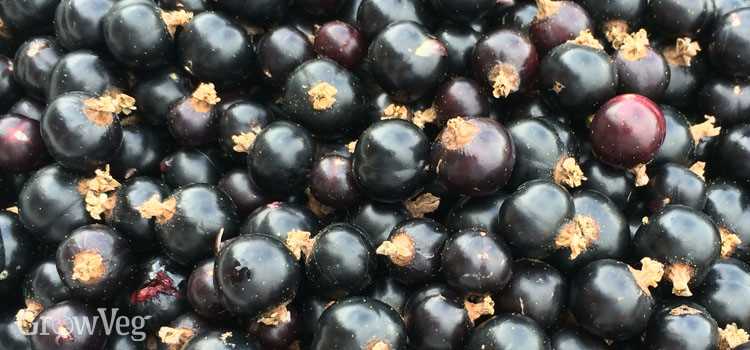
Currant bushes generally require full sun or partial shade to thrive and produce abundant fruit. Ensure that your plants receive at least six hours of direct sunlight each day. If your garden has limited sunlight, choose a suitable location or consider using reflective surfaces to optimize light exposure.
By following these techniques, you can greatly accelerate the fruit-bearing process of your currant bushes and enjoy a bountiful harvest in no time.
Harvesting and Using Currants
Currants are flavorful and nutritious berries that are a delight to harvest and use in various culinary applications. Here are some tips on how to harvest and utilize your currant harvest:
1. Harvesting Currants
The best time to harvest currants is when the berries are fully ripe and have reached their optimal flavor. This usually occurs in late summer or early fall. To harvest the currants:
- Gently hold the berry cluster with one hand.
- With your other hand, use a pair of scissors or pruning shears to snip off the whole cluster at the base.
- Avoid pulling the berries off the stems individually, as this can damage the plant.
2. Storing Currants
Currants can be stored in the refrigerator for up to 2 weeks. To store them:
- Remove any damaged or spoiled berries.
- Place the currants in a perforated plastic bag or a breathable container to allow air circulation.
- Store them in the crisper drawer of your refrigerator.
3. Using Currants in Cooking
Currants are versatile berries that can be used in a variety of culinary creations. Here are some ideas on how to use them:
- Add them to baked goods such as muffins, scones, and cakes for a burst of tart and sweet flavor.
- Incorporate them into jams, jellies, and preserves for a delightful spread.
- Use them in sauces and marinades for meat dishes to add a tangy touch.
- Prepare refreshing beverages like currant-infused water, lemonade, or cocktails.
- Blend them into smoothies for added texture and taste.
4. Health Benefits of Currants
In addition to their delicious taste, currants are packed with essential nutrients and offer numerous health benefits. These include:
- High levels of vitamin C, which strengthens the immune system.
- Rich in antioxidants that help protect cells from damage caused by free radicals.
- Good source of fiber for maintaining a healthy digestive system.
- Contain iron and potassium, which support heart health.
Conclusion
Harvesting currants and using them in your cooking can elevate your culinary experience while providing you with a range of health benefits. So go ahead and enjoy the bountiful delights of these beautiful berries!
Question-answer:
Is it possible to propagate currants from cuttings?
Yes, currants can be easily propagated from hardwood cuttings taken in late winter or early spring.
What is the best time to propagate currants?
The best time to propagate currants is in late winter or early spring, before the new growth begins.
How do I take cuttings to propagate currants?
To take cuttings for propagating currants, select healthy, pencil-thick stems and remove them from the plant. Cut the stems into 6 to 8-inch lengths and remove the leaves from the lower half. Dip the cut end in rooting hormone and plant them in a potting mixture. Keep the cuttings moist and place them in a warm location until they root.
Can I propagate currants by layering?
Yes, currants can also be propagated by layering. To do this, select a healthy, low-growing branch and bend it down to the ground. Make a small incision on the underside of the branch and bury it in the soil. Keep the soil moist and the branch will root and form a new plant.
How long does it take for propagated currants to bear fruit?
It usually takes about 2 to 3 years for propagated currants to bear fruit. However, this can vary depending on the variety and growing conditions.







